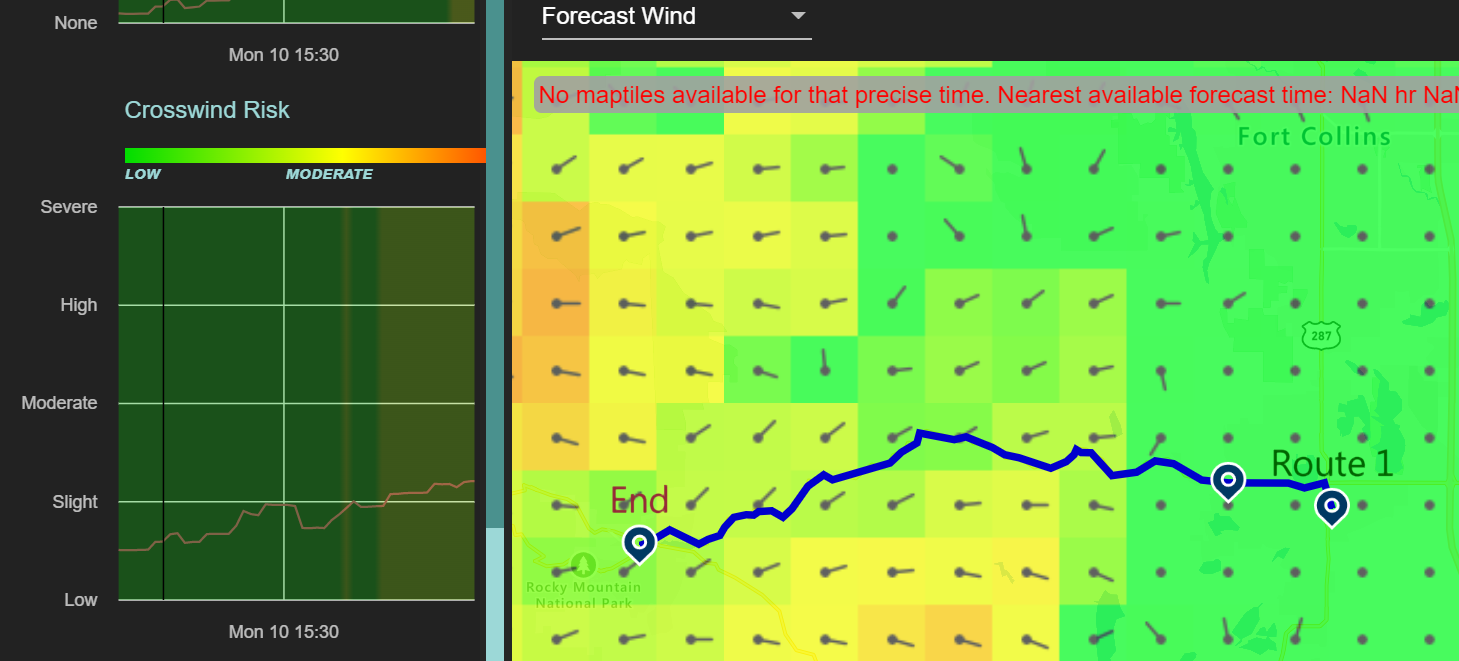How Habistack helps delivery companies avoid delays
October 11, 2022 by Rich kurtzman, Brand Communications @ Fathym

In this piece:
- Introduction to Habistack API
- Habistack can help delivery companies by forecasting weather on their routes and delivery areas
- Using that state-of-the-art technology, companies like UPS could run more efficiently
Delivery truck drivers are considered to have one of the best and top-paying jobs for those without college degrees.
Per US News, being a delivery truck driver falls in their Top-25 best jobs, ranking No. 17 overall.
Not to be confused with long-distance truckers, these are your box truck, local delivery drivers for companies like UPS, FedEx, Amazon and DHL to name a few.
And while these delivery drivers are in a more localized area, the same holds true for them as well as long-distance truckers; knowing what weather to expect will certainly help them get loads to their destinations safely and efficiently.
What is Habistack?
Habistack is a robust, feature-rich API that offers a powerful suite of weather forecasting and open-source data visualization tools.
Habistack combines the world's best weather forecasts with statistics-based, machine-learning techniques to tackle the largest datasets, including road weather. Habistack offers developers comprehensive weather forecasting capabilities over freely chosen locations and routes across the globe. The API delivers a unique suite of highly specialized forecast variables derived through statistically based machine learning models.
It uses 15 data measurements and then evaluates them using artificial intelligence and machine learning.

Habistack is open and free to the public to use. There are also pricing plans for developers that want to use Habistack APIs to forecast weather and road conditions in their own applications.
Road weather
Wouldn’t it be nice to know what weather to expect on the road level? And to know when and where there could be delays?
Now you can.
Habistack allows drivers to input their route and predict the weather along the entire way. That brilliant technology can be used in all types of situations, including inputting a local area, like a driver’s delivery area. That’s extremely powerful not just for individual drivers, but for planners/managers looking to keep their entire fleet of drivers on schedule.
Use case | UPS Customer Center
UPS Customer Centers are the company’s distribution centers.
There are over 250 of these centers across America per UPS’ website and bigger towns seem to be where they are located. Major cities will have multiple customer centers.
Then, each one of those customer centers has tens or hundreds of trucks which deliver to their specific areas.
What if route managers at the customer center were able to pull up weather data – including delay risk factored in – for specific routes or even entire delivery areas? And then, take that data and send it into drivers’ trucks, alerting them to: Icy/wet roads, snow, high winds, rain, hail and more?
Habistack’s API could do just that, if UPS wanted to use it that way.
Proadject | Example webapp using Habistack
Habistack brings in all the data. What developers and enterprises want to do with the data is as simple as creating their own, bespoke applications.
Our Proadject is a simple, example webapp of how Habistack can be used to see weather forecasts all along a specific route.
Proadject route | Loveland, CO to Estes Park CO
The Northern Colorado Customer Center for UPS is located in Loveland, about one hour north of the capital city, Denver.
That center delivers to Loveland, Fort Collins, Wellington, and as far west as Estes Park 30 miles away. It’s not just the long distance which makes it difficult to deliver packages on time, but the fact that drivers must take a windy canyon road, which makes the drive take 48 minutes when conditions are perfect.

Here’s a look at that route, from Loveland to Estes Park using Proadject and Habistack together. For this particular picture, we looked at the wind forecast and on the left, you can see the crosswind risk. Driving those big box trucks makes them susceptible to the wind, so this would be a key forecast for a company like UPS.
As you can see in the right, the wind will be almost nonexistent when the truck departs Loveland. But it will be facing some slight-to-moderate headwinds as it climbs in the canyon and approaches Estes Park. That could create delays.
Delays aren’t just frustrating; they’re debilitating for a business.
From Wonderment, an order tracking app, “After all,13% of shoppers say they wouldn’t order from a retailer a second time after a late delivery.
Ultimately, if you make a habit out of mishandling shipping delays, your customers will notice, and once word gets out that your organization is unreliable then your brand perception will suffer.”
And in the same way Proadject calls up data points all along a route, an app could be created which calls in weather forecasting data for an entire delivery area or even a county.
As Hollingsworth explains here, “Preventing delayed deliveries requires a holistic approach, one that invests in the right resources — above all, technology — to ensure preparedness in just about any scenario that could arise.”
As we embrace technology in all aspects of life – from wearable biometrics sensors to smart security systems at home and maps which give us alternate routes – it's clear how weather forecasting by Habistack can improve the delivery trucking industry as well.